Canon EF 24-70mm f/4L IS USM Review
-
Ease
of Use -
Sample
Images -
Lens
Specs -
Rating &
Conclusion -
Main
Rivals -
Review
Roundup - Comment
-
More…

Introduction
The EF 24-70mm f/4L IS USM is a new premium standard zoom lens for Canon's full-frame and APS-C DSLRs. Featuring Super Spectra coatings, an ultrasonic focus motor, nine-blade circular aperture, silent high-speed AF performance, full-time manual focusing, dust and drip-proof construction and image stabilisation offering a claimed 4-stop advantage, the new Canon 24mm f/2.8 is ideal for wedding and reportage photography. An innovative macro function increases the lens' versatility by allowing shooting at a maximum magnification of 0.7x. The Canon EF 24-70mm f/4L IS USM is available now for £1499.99 / $1499.99 in the UK and the USA respectively.
Ease of Use
For a professional L-series standard zoom, the Canon EF 24-70mm f/4L IS USM isn't too big and bulky, and not too heavy either at 600g. While you can use it on a smaller APS-C body for a 38-112mm equivalent angle of view, it won't balance as well - as demonstrated by the images above, it's a much better match for a professional-grade, full-frame camera like the 6D.
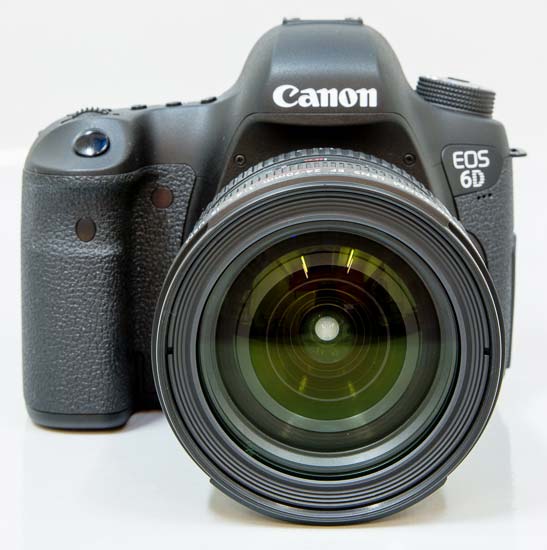 The Canon EF 24-70mm f/4L IS USM lens
The Canon EF 24-70mm f/4L IS USM lens
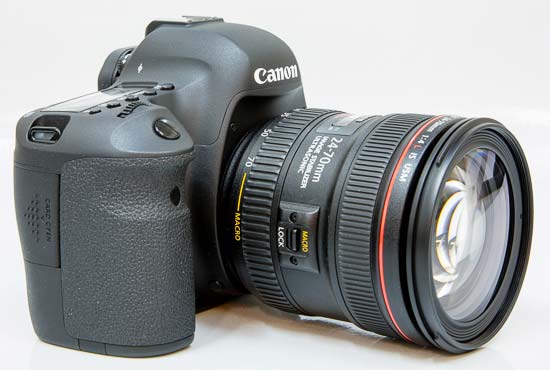 The Canon EF 24-70mm f/4L IS USM lens, isometric view
The Canon EF 24-70mm f/4L IS USM lens, isometric view
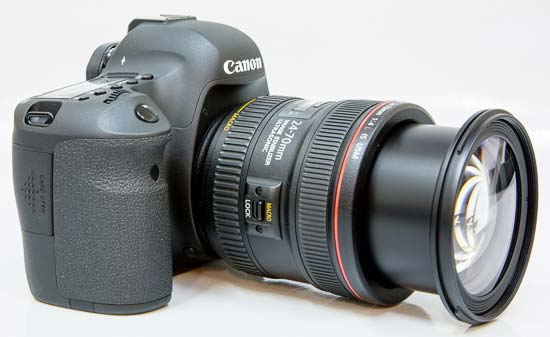 The Canon EF 24-70mm f/4L IS USM lens, extended to 70mm, isometric view
The Canon EF 24-70mm f/4L IS USM lens, extended to 70mm, isometric view
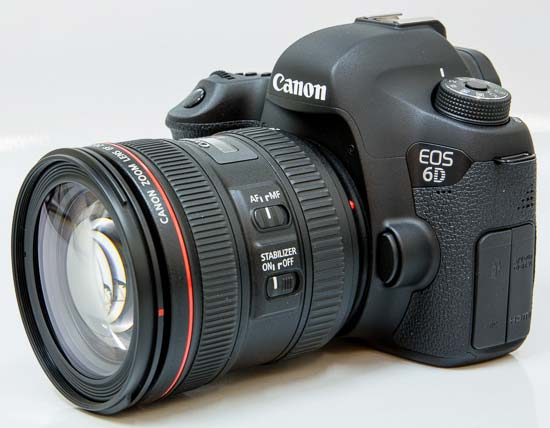 The Canon EF 24-70mm f/4L IS USM lens, isometric view
The Canon EF 24-70mm f/4L IS USM lens, isometric view
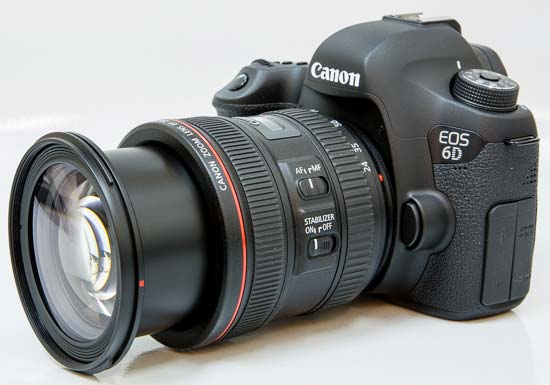 The Canon EF 24-70mm f/4L IS USM lens, extended to 70mm, isometric view
The Canon EF 24-70mm f/4L IS USM lens, extended to 70mm, isometric view
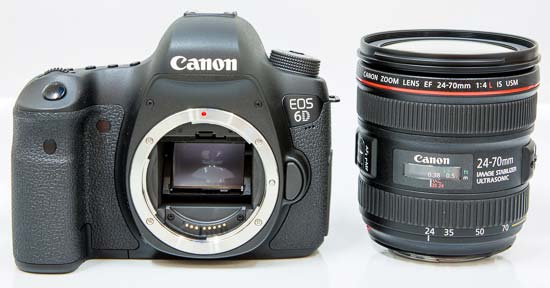 The Canon EF 24-70mm f/4L IS USM lens alongside the EOS 6D
The Canon EF 24-70mm f/4L IS USM lens alongside the EOS 6D
As you would expect from a lens that costs this much, build quality is excellent, certainly up to the "L" moniker that denotes Canon's premium lenses. The Canon EF 24-70mm f/4L IS USM feels very solid in your hand, even if the outer barrel and the filter thread appear to be made from plastic. The focusing ring is just as wide as it needs to be, and has a ridged, rubberised grip band. It has no aperture ring, which is no big deal unless you wanted to use it on a very old film body. The lens also features a distance scale.
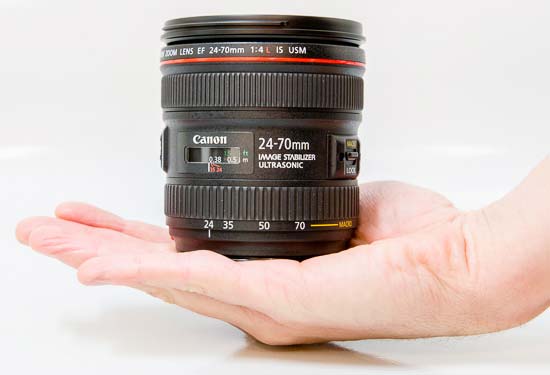 Front of the Canon EF 24-70mm f/4L IS USM lens, in-hand
Front of the Canon EF 24-70mm f/4L IS USM lens, in-hand
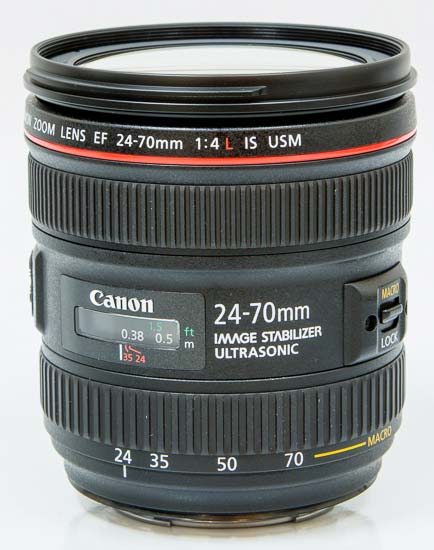 Front of the Canon EF 24-70mm f/4L IS USM lens
Front of the Canon EF 24-70mm f/4L IS USM lens
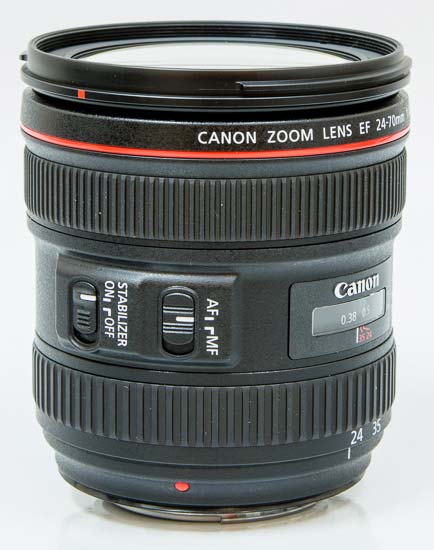 Front of the Canon EF 24-70mm f/4L IS USM lens
Front of the Canon EF 24-70mm f/4L IS USM lens
The Canon EF 24-70mm f/4L IS USM boasts Image Stabilisation which Canon claims offers an advantage of up to 4 f-stops over lenses without a stabilizer. This is activated via the On/Off switch on the side of the lens. If the camera body supports it, Canon's IS technology is also able to detect intentional panning movement and automatically switch from the Normal IS mode to the Panning IS mode.
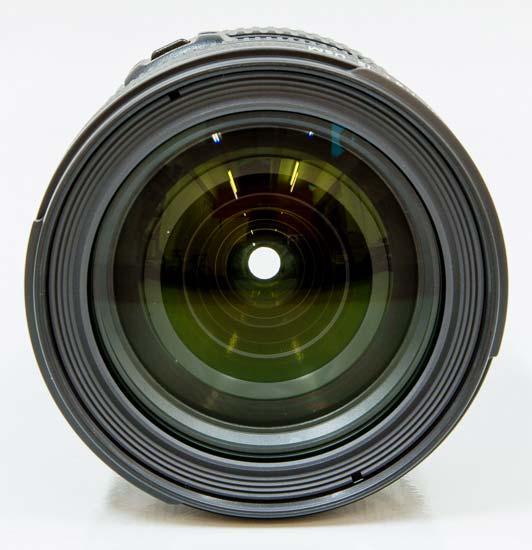 Front of the Canon EF 24-70mm f/4L IS USM lens
Front of the Canon EF 24-70mm f/4L IS USM lens
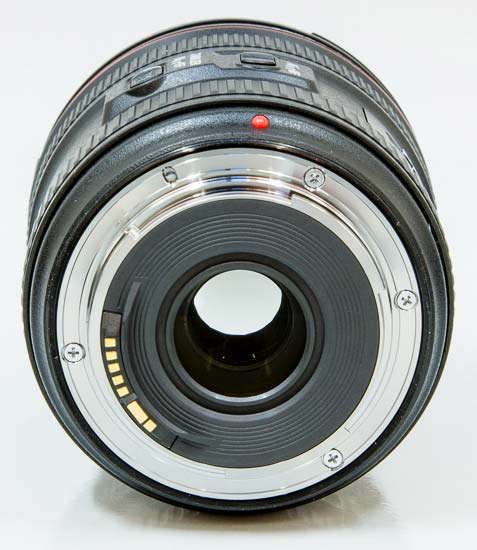 Rear of the Canon EF 24-70mm f/4L IS USM lens
Rear of the Canon EF 24-70mm f/4L IS USM lens
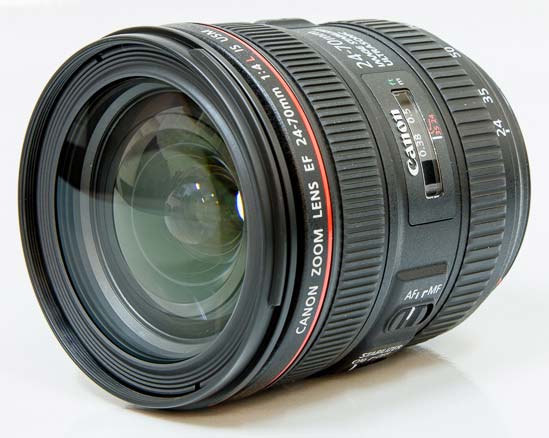 Front of the Canon EF 24-70mm f/4L IS USM lens
Front of the Canon EF 24-70mm f/4L IS USM lens
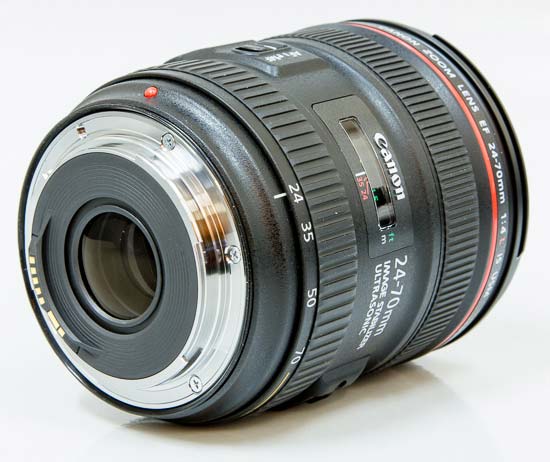 Rear of the Canon EF 24-70mm f/4L IS USM lens
Rear of the Canon EF 24-70mm f/4L IS USM lens
The new Macro / Lock switch turns the Canon EF 24-70mm f/4L IS USM into a very competent macro lens with a close focusing distance of 20cms, rather than the standard 38cm, and a magnification ratio of 0.7x. This specification means that the Canon EF 24-70mm f/4L IS USM will double up as both a standard zoom and macro lens for many users.
Macro mode is activated by pushing and holding the switch to the Macro setting and rotating the zoom ring to the yellow Macro setting at the end of the range. You can then slightly fine-tune the composition of the image by rotating the zoom ring through the distance indicated by the yellow line, with the corresponding yellow line on the distance scale indicating th focus range.
The same switch also activates the Lock function - set the focal length to 24mm and move it backwards to the Lock position to prevent the zoom mechanism from creeping when the camera is pointed down or in storage.
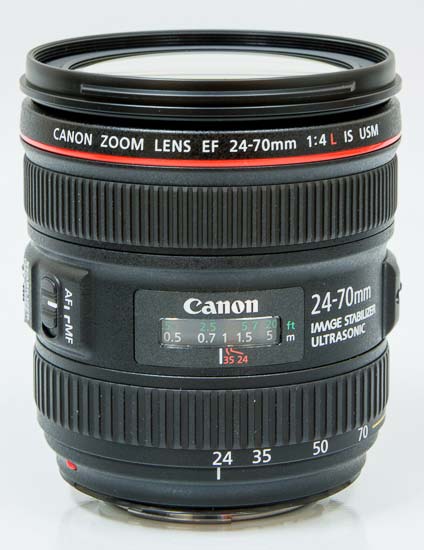 Front of the Canon EF 24-70mm f/4L IS USM lens, 24mm
Front of the Canon EF 24-70mm f/4L IS USM lens, 24mm
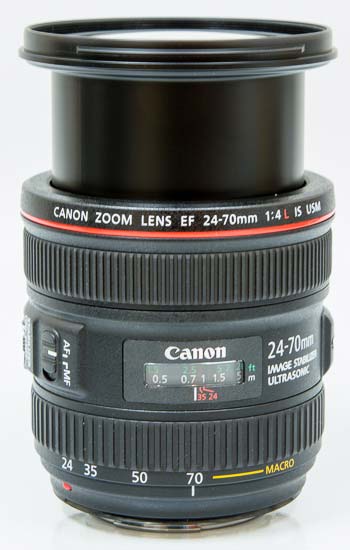 Front of the Canon EF 24-70mm f/4L IS USM lens, 70mm
Front of the Canon EF 24-70mm f/4L IS USM lens, 70mm
The final control on the lens barrel is a focus mode switch with the usual AF/MF settings. Note that this lens usefully offers full-time manual focusing even when AF is selected.
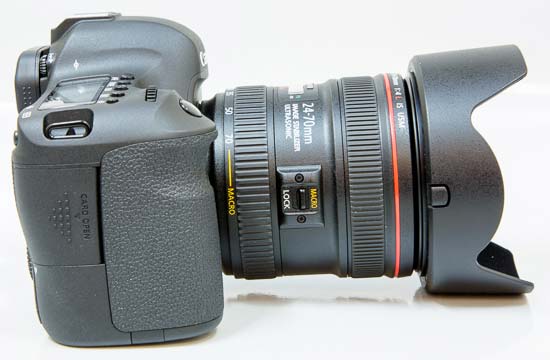 The Canon EF 24-70mm f/4L IS USM lens with the supplied lens hood fitted
The Canon EF 24-70mm f/4L IS USM lens with the supplied lens hood fitted
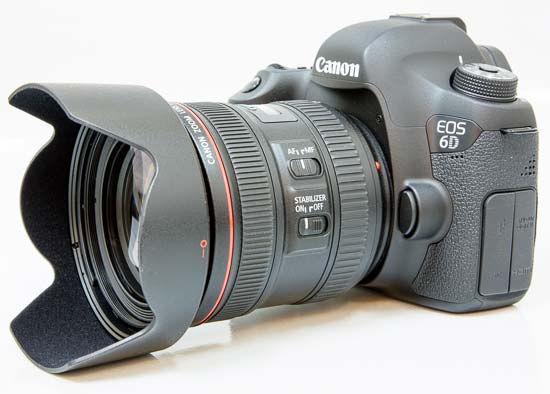 The Canon EF 24-70mm f/4L IS USM lens with the supplied lens hood fitted
The Canon EF 24-70mm f/4L IS USM lens with the supplied lens hood fitted
The lens ships with a petal-shaped lens hood (EW-83L) and a protective drawstring lens case.
Focal Range
At the 24mm focal length the angle of view is 74 degrees.
 Field of view at 24mm
Field of view at 24mm
At the 70mm focal length the angle of view is 29 degrees.
 Field of view at 70mm
Field of view at 70mm
Focusing
The Canon EF 24-70mm f/4L IS USM lens has a wide-enough focus ring. There are hard stops at both ends of the range, making it easier to set focus at infinity. Polariser users should be pleased that the 77mm filter thread doesn't rotate on focus.
When it comes to auto-focusing, the Canon EF 24-70mm f/4L IS USM zoom is a quick performer, taking about 0.15 seconds to lock onto the subject when mounted on the Canon EOS 6D that we tested it with.
We didn't experience much "hunting", either in good or bad light, with the lens accurately focusing almost all of the time. It's also a fairly quiet performer, thanks to the built-in USM (Ultra Sonic Motor), which makes this lens quite well-suited to video recording.
Chromatic Aberrations
Chromatic aberrations, typically seen as purple or blue fringes along contrasty edges, are impressively well controlled with this lens - the examples below show the worst-case scenario.
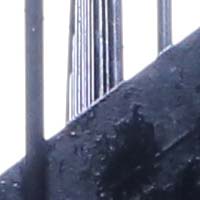 |
 |
Light Fall-off
With the lens wide open at f/4, you can see some slight light fall-off in the corners. Stopping down helps, although to completely get rid of this phenomenon, you will need to use an f-stop of f/5.6 or smaller.
Barrel distortion isn't too bad at all at the 24mm wide-angle focal length, disappearing completely at 35mm.
 Vignetting at 24mm
Vignetting at 24mm
 Vignetting at 70mm
Vignetting at 70mm
Macro
The Canon EF 24-70mm f/4L IS USM also usefully doubles up as a competent macro lens. When the Macro mode is activated the close-focus point is at 20cm from the film/sensor plane, and Canon quotes a maximum reproduction ratio of 0.7x for the lens. The following examples illustrate how close you can get to the subject in both standard and Macro modes.
 Close-up performance, non-Macro mode
Close-up performance, non-Macro mode
 Close-up performance, Macro mode
Close-up performance, Macro mode
Bokeh Examples
Bokeh is a word used for the out-of-focus areas of a photograph, and is usually described in qualitative terms, such as smooth / creamy / harsh etc. Canon have employed an iris diaphragm with 9 rounded blades for a pleasing rendering of the out-of-focus highlights. Based on what we have seen, we can say that they largely succeeded. Below you'll find some examples, but you are also encouraged to check out our sample images.
 |
 |
 |
 |
Sharpness
In order to show you how sharp this lens is, we are providing 100% crops on the following pages.
-
Ease
of Use -
Sample
Images -
Lens
Specs -
Rating &
Conclusion -
Main
Rivals -
Review
Roundup - Comment
